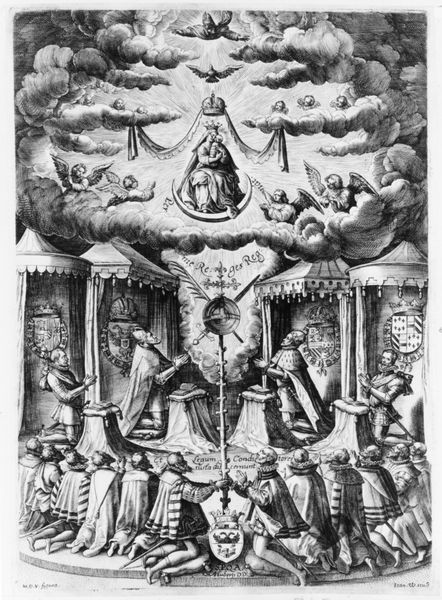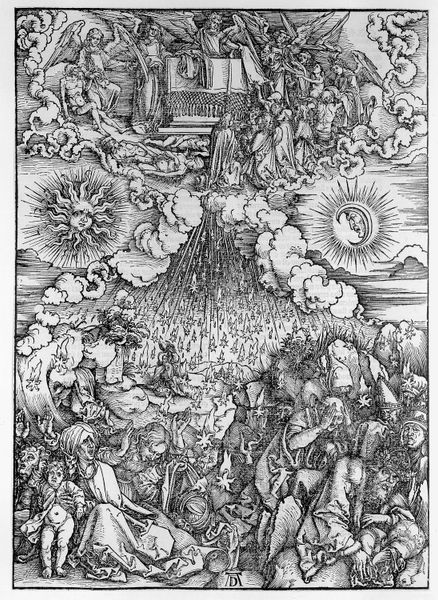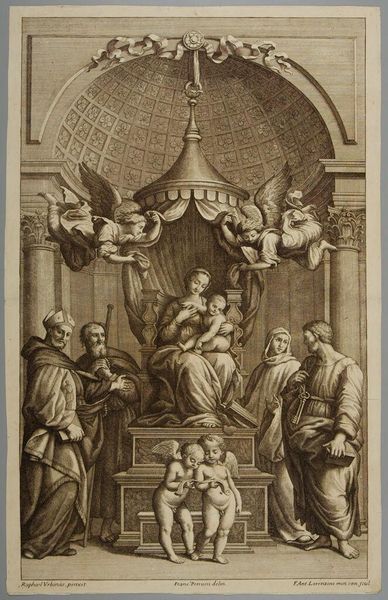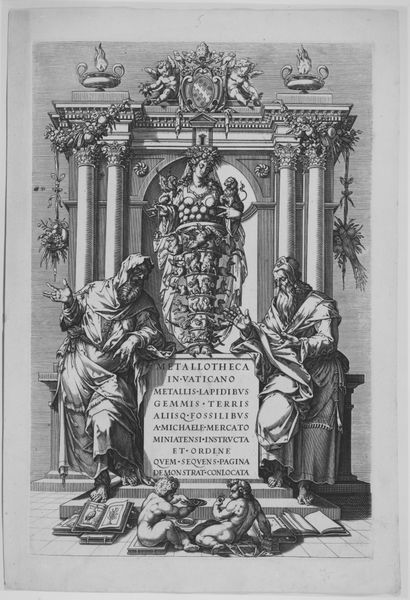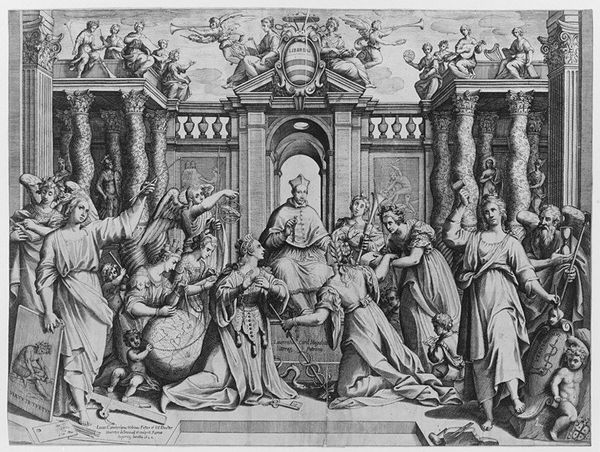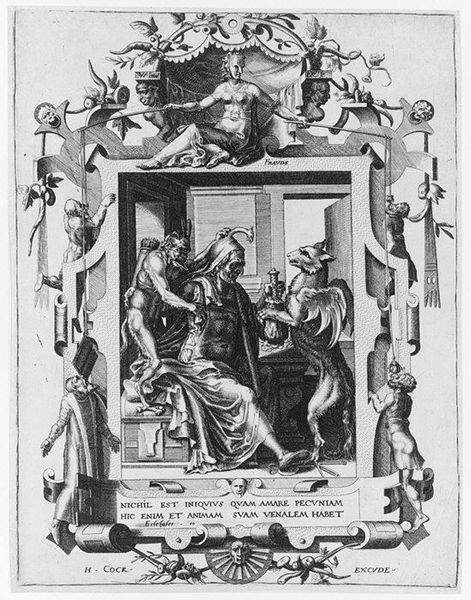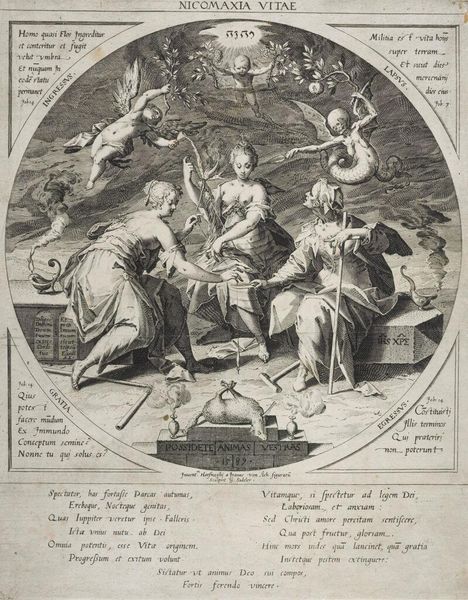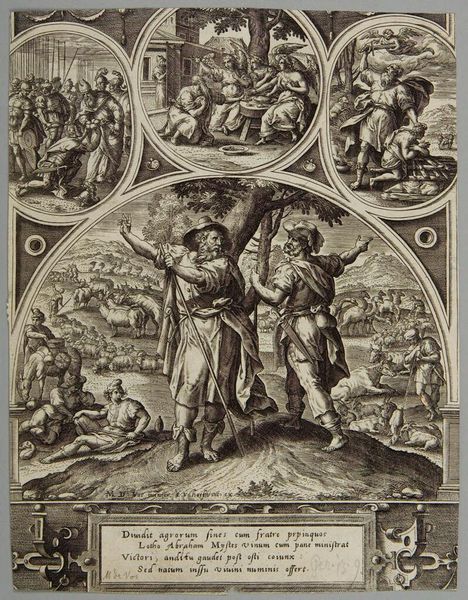
drawing, print, intaglio, engraving
#
drawing
#
allegory
#
pen drawing
# print
#
intaglio
#
old engraving style
#
11_renaissance
#
history-painting
#
northern-renaissance
#
engraving
Dimensions: Upper sheet: 14 1/2 x 19 3/4 in. (36.8 x 50.2 cm) Lower sheet: 13 1/2 x 19 5/8 in. (34.3 x 49.8 cm)
Copyright: Public Domain
Curator: Immediately, I’m struck by the sheer density of detail. The tightly packed figures and ornate framing elements create a sort of visual cacophony. Editor: Indeed. Let’s delve into this print, “The Triumph of Christian Faith,” created by Jost Amman sometime between 1550 and 1591. The Met houses this piece; it’s a prime example of Northern Renaissance engraving and the symbolic weight of that period. Curator: Weight is right. The allegorical figures layered within that heavy oval—it almost feels oppressive. There's a hierarchy being meticulously enforced here, isn't there? The heavenly realm practically sits atop the human one. Editor: Precisely! Observe how the lower figures—seemingly representations of pagan deities—are dramatically cast down. The rising tiers feature scenes alluding to sacrifice, prophecy, and the virtues associated with Christian faith, building toward the image of Christ at the very top, backed by Hebrew script referencing God’s divine name. Curator: And that swirling, decorative border functions almost as a force field, visually separating this scene from the outside world. Do you see any attempt to create an integrated, natural space, or is everything staged to reinforce the intended religious message? Editor: Good point. The image abandons naturalism to become pure symbolism. Everything, from the postures of the figures to the light radiating from the dove representing the Holy Spirit, underscores the supremacy of Christian doctrine. The intaglio method further reinforces the image's gravity; each precisely etched line builds the scene into an impactful and imposing work. Curator: It’s less a representation, then, and more of a declaration. A strong assertion of Christian dominance, rendered with an almost intimidating degree of skill. There are remnants here, of course, of the transition into new religious norms. Editor: The triumph declared here really exemplifies that moment when Reformation and Renaissance culture shaped an emerging new cultural narrative, rendered through symbolic language so different from our own. Curator: A stark and revealing reminder of the visual rhetoric deployed during periods of monumental cultural transformation.
Comments
No comments
Be the first to comment and join the conversation on the ultimate creative platform.
